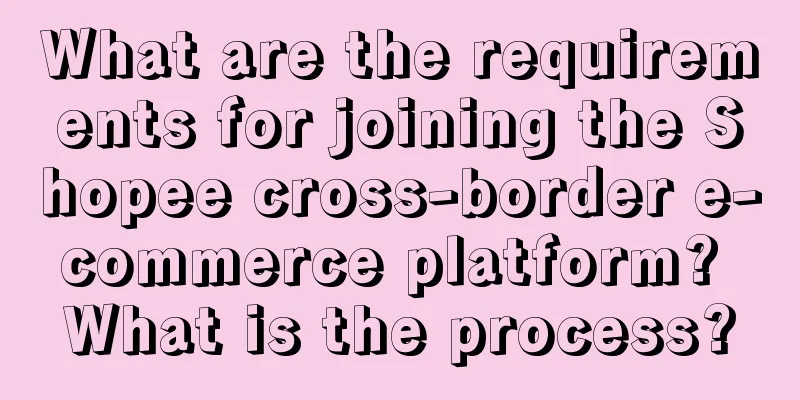Ten years of experience summary: 9 tips for international SaaS startups

|
In my opinion, there are many factors that make a SaaS company successful, but the reasons for failure are similar. Therefore, I hope to combine my entrepreneurial experience in the international SaaS field over the past ten years and my observations of other SaaS companies in the industry to summarize some SaaS entrepreneurial suggestions and share them with you, so as to increase the success rate of our SaaS entrepreneurs: 1. Start your business based on the founder’s own pain points; 2. Create cutting-edge products in niche areas and then expand upstream and downstream; 3. Start thinking about how to sell your product from day one; 4. Understand that the core of SaaS is service, not software; 5. Keep the team small and try to provide standardized products and services; 6. Maintain open connections and work with partners to provide good customer service; 7. In the early stage, we focus on customer retention and product gross profit margin rather than the number of customers; 8. Find indicators that are closely related to customer success and force all employees to achieve customer success; 9. Be prepared to have the patience and cash flow to see results for at least five years, and find talent who also believes in long-termism. These experiences may not be applicable to all SaaS companies, so please be open-minded and feel free to discuss with me if you have different opinions. 1. Start your business based on the founder’s own pain pointsWhen we start a business, we usually have to do two things: one is to find the customer's pain points, and the other is to find a way to satisfy the customer's pain points. In my opinion, the best case scenario is that the founder himself deeply understands the pain point, and then finds a way to solve his own pain point, and finally iterates it into a standardized SaaS product and brings it to market. If you have a pain point of your own and then create a solution to solve this pain point, then your chance of entrepreneurial success is 1%. So if you don’t have your own pain points, but instead you have to find a pain point first and then create a solution, then this is equivalent to starting a business twice, and your chance of success is 1% * 1% = 0.01%. From what I’ve observed, many successful SaaS entrepreneurs started by developing products based on their own pain points: 2. Create cutting-edge products in niche areas and then expand upstream and downstream
Prioritize finding a niche area and creating a small and beautiful product. When the product business is doing well enough, use it as a starting point to expand more products upstream and downstream. For example, Shopify was originally a tool that allowed individual users and small and medium-sized enterprises with no website building experience to quickly build their own e-commerce websites by themselves. After attracting a group of seed customers, Shopify launched more product features that customers need in the business scenarios of opening online stores, such as online store design tools, search engine optimization tools and payment gateways. As the number of customers continued to increase, Shopify continued to introduce new marketing tools and application stores, and expanded upstream and downstream products such as Shopify Plus, POS systems, and Shopify Pay. It also opened up its API to allow external developers to build applications that integrate with the Shopify platform, ultimately successfully creating an e-commerce ecosystem[2]. Another example is HubSpot. Initially, it only provided products to help enterprises conduct blogging, social media and email marketing. Later, based on the business scenarios of customers, it further expanded its upstream and downstream products to include HubSpot CRM, Marketing Hub, Operations Hub, Service Hub, and other products[3]. In addition, if you observe carefully, you will find that whether it is Deel, which has been very popular in recent years, or software-to-SaaS products made by old giants such as Microsoft Office 365, they basically conform to the development strategy of "first finding a niche field, creating a cutting-edge product, and then using it as a starting point to expand more products upstream and downstream." 3. Start thinking about how to sell your product from day oneIn the early stages of a SaaS startup, one of the most important things is to find target customers and quickly verify whether you are selling "vitamins" or "painkillers." "Vitamin" means: this product may be of some help to the customer if used, but the impact will not be significant if not used. "Painkiller" means: the customer now has a very painful pain point, and he must use your product to solve this pain point, and he can see the effect immediately after using it. The most direct way to verify whether you are selling "vitamins" or "painkillers" is to sell the product to customers. The following figure shows the traditional product landing process: The cycle required to obtain feedback is extremely long and the verification cost is also high. It often happens that we spend half a year to build a team, invest one or two years in developing a product, and finally find out when we launch it to the market: The pain points we initially assumed were not the customers’ real pain points at all, and not many customers were willing to pay for the products we made. So in order to verify the pain points as early as possible, I suggest that you move the step of "selling products to customers" before "forming a team" and "developing products": If many customers are willing to pay for it, we will then vigorously build a team and develop products. If few customers are willing to pay for it, then we can also rethink the customer pain points and solutions, and then go through the "1-2-5" process again. For specific instructions, I recommend reading "How to quickly and cost-effectively verify the feasibility of international SaaS products?" 4. Understand that the core of SaaS is service, not softwareAs an entrepreneur with a technical background, I understand very well that some of my peers have an obsession with "I want to use the best technology to help customers solve problems." However, from the customer's perspective, they are more concerned about whether your solution can help them truly solve the problem than what technology is used behind the service you provide. For example, in order to help clients solve recruitment compliance issues around the world, Deel has registered hundreds of physical companies in different countries and regions, and hired many legal advisors from different regions to develop contract templates that comply with local regulations. These things may not belong to "software", but they are "services" that can truly solve problems for customers. For example, if we want to provide logistics tracking services to global e-commerce sellers for the AfterShip Tracking product, we must connect with logistics providers from all over the world. This may not be technically sexy at all, and may even be boring. But if we want to provide better services to our customers, we have to do this, so AfterShip has persisted in connecting with more than 1,000 logistics providers around the world in the past 10 years. 5. Keep the team small and try to provide standardized products and servicesIn the early days of SaaS, many people face two problems:
Then, as the team grew in size and we burned through money quickly, we were forced to take on some customized requests from big customers due to pressure from funding and investors. But in my opinion, the customized demands of large customers are like chronic poison to SaaS companies. Although they can ease financial pressure in the short term, the harm will become greater in the future. To avoid this problem from the beginning, we came up with a very simple solution, which is: In the early days, we formed a small team, tried not to raise funds, and rejected customized demands. There are several benefits to forming a small team and standardizing:
Even for those SaaS companies that have successfully gone public, according to Meritech Capital’s survey of SaaS companies that went public in 2022, their median team size was only 940, and the corresponding median ARR reached US$223 million[6]. I also recommend you to read "Why is a small team better than a large team for international SaaS?" to learn more about forming a small team to develop international SaaS products. 6. Maintain open connections and work with partners to provide good customer serviceBecause we just formed a small team and helped customers solve problems by providing standardized product services, a situation may often occur: The products and services we provide can only meet about 70% of customers' needs in real business scenarios. For the remaining 30%, our products and services are difficult to cover. For this part of the problem, my recommended approach is: Maintain open connections and meet customers' needs by supporting access to more other partners. According to SaaStr data, the average start-up SaaS company supports access to around 15 partner software, while the average listed SaaS company supports access to around 350 partner software. Market-leading SaaS companies such as Shopify, Atlassian, and Slack support access to more than 2,000 partner software[7].
We at AfterShip are currently connected to more than 60 partner software, including some of our competitors: (Image source: https://www.aftership.com/integrations/search) If you want to know more about my thoughts on open connections, you’re also welcome to read “Why AfterShip Sells Its Services to Competitors?” 7. Focus on customer retention and product gross profit margin rather than customer numbers in the early stagesAfter we have found a breakthrough point, formed a small team, polished the product, and acquired some customers, many entrepreneurial friends will face a new problem: Should I speed up customer acquisition and increase the number of customers as quickly as possible? My suggestion is: before increasing the number of customers, we should first ensure customer retention. “You already have 100 customers. Don’t tell me about getting 1,000 or 10,000 new customers. Can you first serve these 100 customers well and keep them?” Because in most cases, SaaS products need some customer acquisition costs to acquire new customers, and the subsequent provision of product services also requires costs. Even if our SaaS products have started charging, it usually takes about half a year to a year to recover the customer acquisition costs[8]. So if we don’t increase customer retention and product gross profit margin to a certain level, the more customers we acquire, the faster we will die. If your target customers are small and medium-sized enterprises, then a good monthly customer retention rate is 95%-97% [9]. Before accelerating customer acquisition, I suggest that you increase your product gross profit margin to more than 70%. For specific information on how to increase your product gross profit margin, I recommend you read "If This SaaS Indicator Is Not Done Well, The More Customers You Have, the Faster You Die." 8. Find indicators that are closely related to customer success and force all employees to achieve customer successThe core of SaaS is renewal, and the key to renewal is that we need to continue to help our customers succeed. However, there are usually two problems in the process of helping customers succeed: First, the team does not understand the importance of customer success and is unable to think about how to help customers succeed at all times in their daily work; Second, how can we make the company's revenue grow along with our customers' business while providing them with better products and services and helping them achieve better business results? In order to solve these two problems, I strongly recommend that you link the product’s charging model with the key indicators of customer business success when starting a business. For example, our AfterShip Tracking product will associate the price of product services with the number of express orders of customers (e-commerce brands). (Image source: https://www.aftership.com/pricing/tracking) If our AfterShip Tracking helps clients create a better shopping experience for their consumers and enhances their brand influence, then consumers will be more willing to choose to shop on the client's website. As consumers buy more products from this e-commerce brand, the number of express orders from this e-commerce brand will increase, thereby bringing higher revenue to AfterShip. In addition, we will also force the team to achieve customer success by "trying not to let sales staff sign contracts with customers for more than one year": Because if the products and services we provide are not good enough, but the customers sign a multi-year contract, then they are equivalent to being kidnapped by the contract. Even if they are not satisfied with the services we provide, they still have to pay us in the second year. If we only sign a one-year contract, the team must find ways to serve the customer well and help them succeed after signing the contract, otherwise the customer will not renew the contract in the second year. I also recommend reading "How should SaaS products be charged to make you and your customers successful?" and "Why we don't allow sales to sign contracts longer than one year?" to learn more. 9. Be prepared to have the patience and cash flow to see results for at least five years, and find people who also believe in long-termismAlthough in recent years, due to the combined effect of various factors, a series of SaaS companies such as Slack, Deel, and Wiz have experienced explosive growth, and their ARR has quickly exceeded 100 million US dollars. But overall, SaaS entrepreneurship is still a long-term thing. The long-term here does not mean two or three years, but five years or more. According to Kimchi Hill’s 2020 survey of the world’s top 140 SaaS companies with ARR exceeding US$100 million, only 8.3% of these SaaS companies were established five years ago or less[10]. (Image source: https://kimchihill.com/2020/04/09/path-to-100m-arr/) Even for the already very successful SaaS companies in these industries, most of them took five to ten years, or even more than fifteen years, to achieve $100 million in ARR and become noticed by everyone. We only see the current glory of these successful SaaS companies, but ignore that it took them an average of 4.5 years from their establishment to reach an ARR of $10 million, not to mention other companies that failed in the process. Therefore, when starting a business in the SaaS field, even if we have found a good customer pain point and market entry point, and created a cutting-edge product with the core team, we still need the patience and cash flow to start a business for at least five years to see results. At the same time, when forming a team, in addition to evaluating the professional capabilities of the talents, we also need to see whether the talents have enough long-termism, whether they agree with what we do, and whether they have the determination and patience to make long-term investments. Only by finding the right talents who also have a long-term perspective can they walk with us to the end. SummarizeStarting a business in the SaaS field is a very difficult thing. There are many factors that make a SaaS company successful, but the reasons for failure are similar. So in order to help friends who want to start a business in the international SaaS field avoid some detours, I have summarized the following suggestions for your reference: 1. Start your business based on the founder’s own pain points; 2. Create cutting-edge products in niche areas and then expand upstream and downstream; 3. Start thinking about how to sell your product from day one; 4. Understand that the core of SaaS is service, not software; 5. Keep the team small and try to provide standardized products and services; 6. Maintain open connections and work with partners to provide good customer service; 7. In the early stage, we focus on customer retention and product gross profit margin rather than the number of customers; 8. Find indicators that are closely related to customer success and force all employees to achieve customer success; 9. Be prepared to have the patience and cash flow to see results for at least five years, and find talent who also believes in long-termism. I hope the above suggestions can be helpful to everyone. If you agree with my point of view, please like, follow and forward it so that more people can see it. If you have different opinions, you are welcome to leave a message below and discuss with me. Reference Links: [1] https://www.lightercapital.com/blog/why-do-most-saas-startups-fail [2] https://en.wikipedia.org/wiki/Shopify [3] https://en.wikipedia.org/wiki/HubSpot [4] https://www.reddit.com/r/SaaS/comments/pj0uvb/we_bootstrapped_crispchat_as_a_2person_team_to_1m/ [5] https://www.saastr.com/5-interesting-learnings-from-expensify-at-140000000-in-arr/ [6] https://www.meritechcapital.com/blog/2021-review-select-saas-ipos [7] https://www.saastr.com/the-top-saas-companies-have-an-average-of-350-integrations/ [8] https://www.paddle.com/resources/payback-period [9] https://www.saasgrowthhacker.com/average-churn-rate-in-saas/ [10] https://kimchihill.com/2020/04/09/path-to-100m-arr/ |
<<: In 2023, overseas advertising and marketing will have "three major changes"
>>: Is it difficult to convert existing users into new ones at low cost?
Recommend
Where can I find Amazon's sell-through rate? How can I check my sales volume?
Merchants who open stores on Amazon will basically...
Brand and price determine life and death
What is the most important thing for a brand? This...
With 3 million private domain users and a 5-fold increase in mini program GMV, how did Jiumu Miscellaneous Store achieve high growth in private domain performance?
This article starts with the growth of private dom...
"Information flow" is not a panacea, click-through rate is the key to success or failure
In the field of digital marketing, information flo...
What does a trade surplus mean? Is a trade surplus or a trade deficit better?
In foreign trade, if you do not understand the mea...
Using the hot-selling mindset to operate self-media content will only make you make more mistakes
For those who want to learn more about operations,...
Can Amazon Germany ship without VAT? Detailed answer
If you want to open a store and sell things on Ama...
Is Pang Donglai the standard answer to China’s retail industry?
In the landscape of China's retail industry, P...
Is it better to do cross-border e-commerce import or export? How to choose a cross-border e-commerce platform?
With the increasing integration of the global mark...
How much traffic does wish require to place an order? How can I achieve this?
We have to first clarify a concept, that is, in mo...
What does it mean to follow the sale of Amazon products? What does it mean to follow the sale?
Amazon allows follow-selling, which adopts the pri...
How did sports APP medals become the new social currency for young people?
Some time ago, Keep medals sold 500 million, becom...
How can the maternal and infant industry do a good job in private domain? Mastering these 4 points is the key!
This article mainly talks about how to do a good j...
How much does it cost to do e-commerce on Amazon? Is it profitable?
Many people want to do e-commerce, but now domesti...
Where is the login page for the Alibaba International Station website? What are the conditions?
No matter who wants to use which software, you nee...









